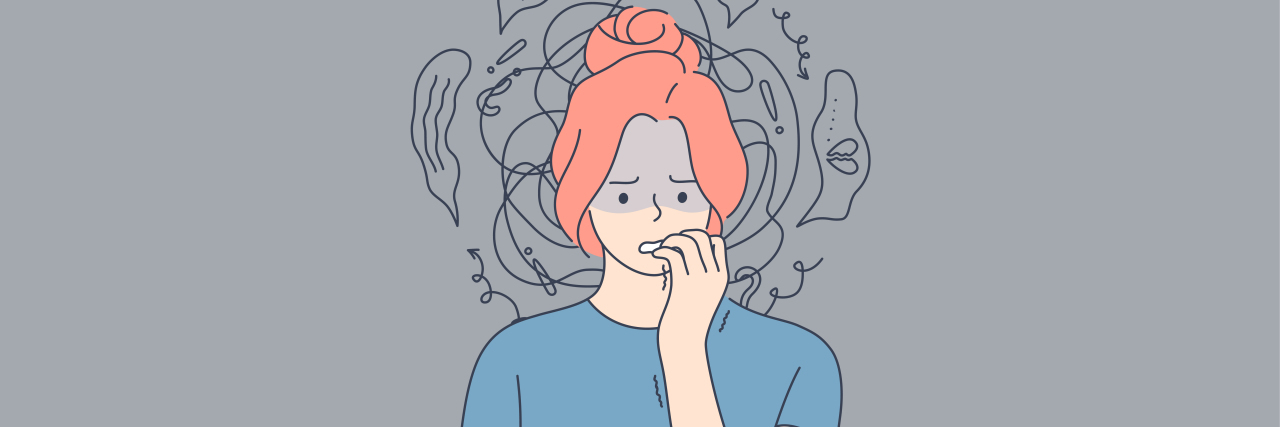I have a condition called hypermobile Ehlers-Danlos syndrome, or hEDS for short. It’s a hereditary connective tissue disorder which basically means that the collagen in my body is faulty. Collagen acts as a bit like glue in the body, holding all the organs and joints and bits in between together. So as you can imagine when the glue in my body is faulty, everything falls apart, quite literally.
• What is Ehlers-Danlos Syndrome?
• What Are Common Ehlers-Danlos Syndrome Symptoms?
My joints regularly sublux (partially dislocate) or dislocate which is painful but I’ve learned to self-manage, and going to A&E (aka the ER) the vast majority of the time isn’t necessary, as painful as my dislocations can be. Along with my joint problems, the faulty collagen means that my organs are too stretchy. The main organs affected in my body include my heart — and secondary to that I have developed a condition called PoTS, postural orthostatic tachycardia syndrome. I also have intestinal dysmotility, which means that my gastrointestinal system works on the go-slow.
But the part of my hEDS that is really hard to talk about is how my bladder is affected. I’m now 27 and for several years now I have had to live with incontinence. Due to another neurological illness, I don’t sense when my bladder is full, which leads to urine retention. Then, because of my faulty collagen as a result of my hEDS, my bladder will stretch beyond normal capacity until it is too full and I become incontinent. Also because of my faulty collagen, my urinary system doesn’t “hold it in,” so I can leak.
At 27, I have to wear incontinence pads. Going out is a bit of an ordeal as I have to ensure that I’m covered for all eventualities, including packing a change of clothes, pads, wash wipes, nappy bags etc. I feel too young to be dealing with these things, and using pads has just been putting a band-aid on the problem. But I’m now under a new urology team with a consultant and specialist nurses and we’re exploring ways to improve my life including the option of having surgery to insert a suprapubic catheter (SPC). Other non-surgical catheters are not suitable for me, so I’m just hoping that can be given the go-ahead as it would really improve my quality of life.
I have found comfort in talking to a couple of other people around my own age with HSD (hypermobility spectrum disorder) and hEDS (both conditions are pretty much the same) who have to deal with incontinence too as part of their HSD/hEDS. Together we have shared our journey of living with HSD/hEDS and how our urinary problems started to how things are now and how they manage their incontinence.
They’ve shared with me their use of different types of catheters and how it feels to use them and the improvement they have brought, but also the challenges of having catheters and urinary problems and having HSD/hEDS in general. It’s helped me to feel that I’m not alone in having to deal with such embarrassing and hard-to-talk-about problems at a young age. And equally, they have found it helpful to talk about urinary and incontinence problems as they also felt embarrassed and alone like I did.
No one chooses their disability or chronic illness and the symptoms that come along with their disability/chronic illness. Some symptoms can be really easy to talk about, while others can be really hard to talk about. It’s taken me a lot of courage to write this post, but I want to share that there is no shame in embarrassing symptoms. It really can help to reach out and talk to others who are experiencing similar problems. So often the things we find hard to talk about make us feel like we’re the only ones — but you’ll soon find that you’re not.
Getty image by Alexei Morozov.

